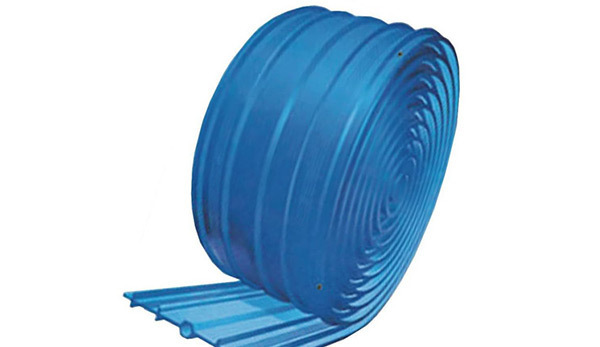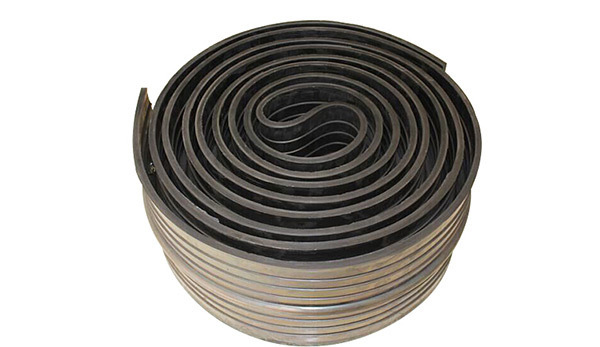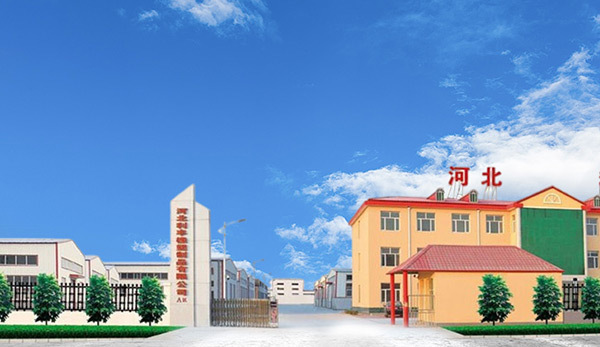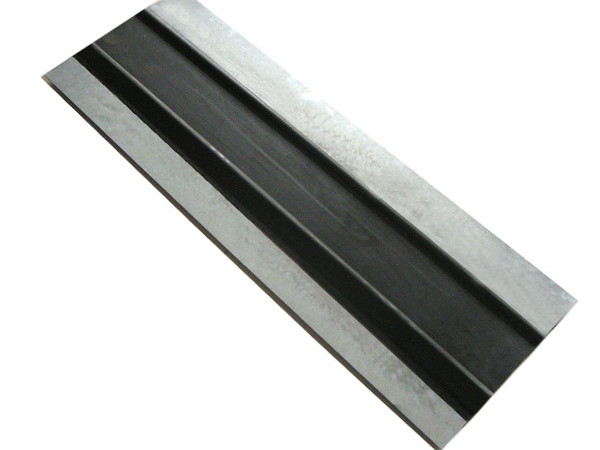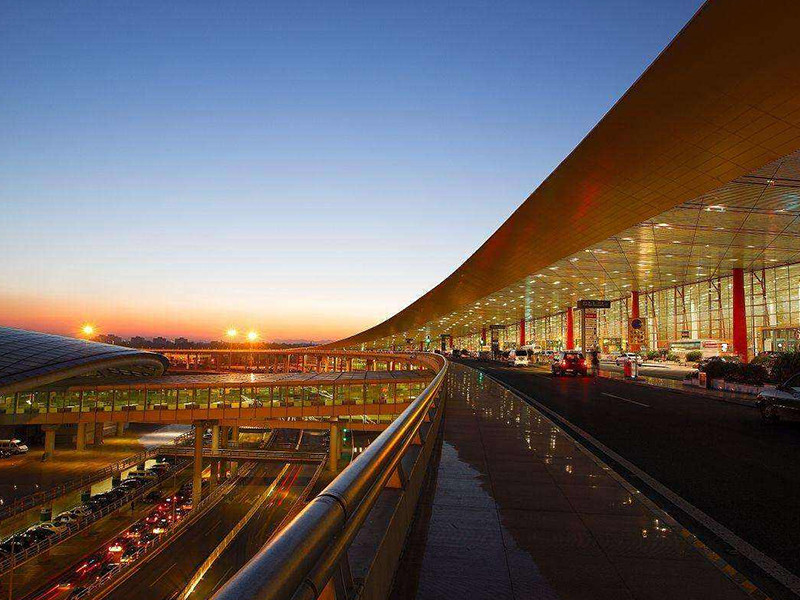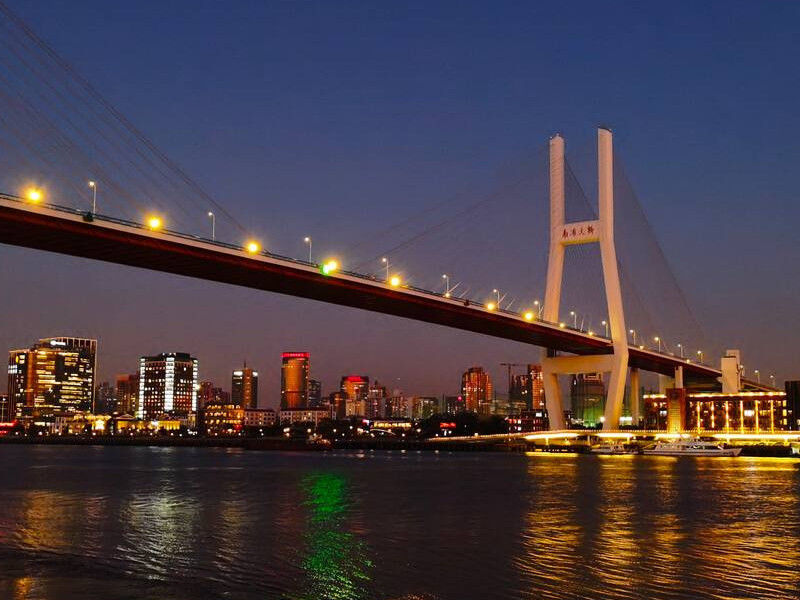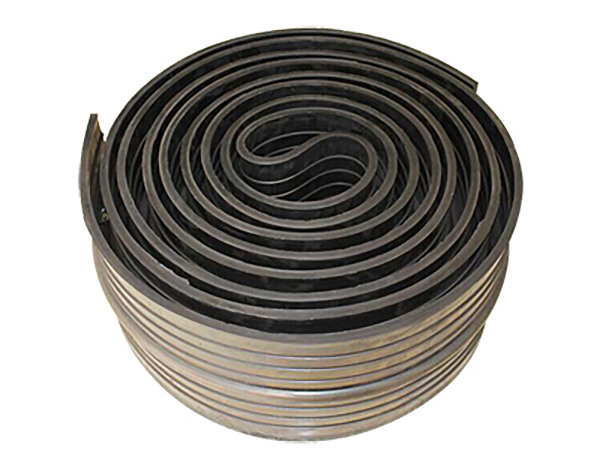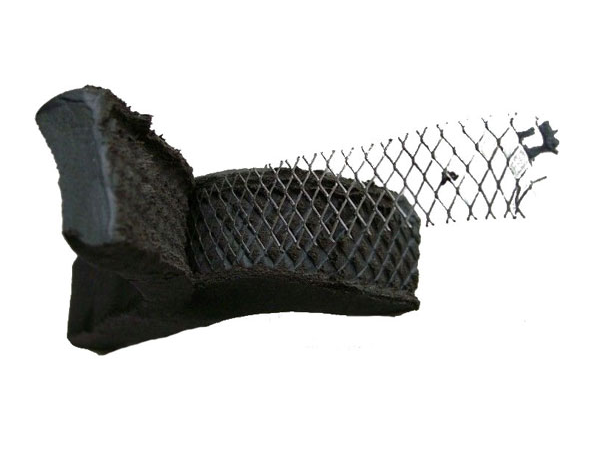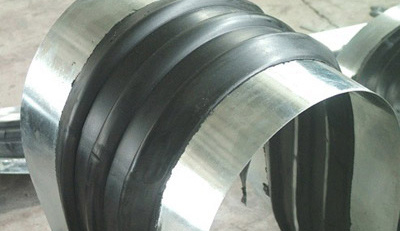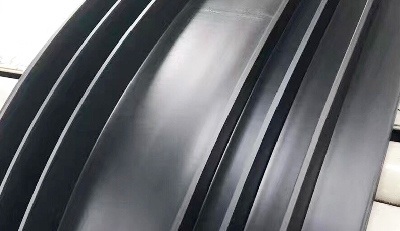2021/12/16
A rubber steel edge water stop with a metal positioning component.
The rubber steel edge water stop belt is an embedded rubber water stop belt and is a commonly used form. The reason why the steel edge rubber water stop belt is widely used in deformation joints is that this material has good expansion deformation performance, especially the setting of holes on the steel edge rubber water stop belt, which increases the expansion deformation of the water stop belt when the main concrete structure settles unevenly. Therefore, it is very important to install holes on the water stop belt in the middle of the deformation joint. Currently, the rubber steel edge water stop belt is usually fixed with steel wire, but the problem with steel wire fixation during construction is that the water stop belt is prone to displacement during the concrete pouring process, causing the holes in the water stop belt to deviate from the deformation joint, failing to fully exert its excellent performance. From the above analysis, it can be seen that the existing rubber steel edge water stop belt lacks a rubber water stop belt that can remain stable and not shift during the subsequent concrete pouring process.
2021/12/26
Rubber Waterstop Product Guide
Made from natural rubber or various synthetic rubbers as the main raw materials, mixed with various additives and fillers, and processed through plasticization, mixing, calendering, and vulcanization.
2021/12/26
Application and Role of Rubber Waterstop in Engineering
The application and function of rubber water stop belts in engineering. Water stop belts utilize the high elasticity and compressive deformability of rubber to produce elastic stretching deformation under various loads. They are mainly used at joints and surrounding joints in underground foundations and tunnel engineering, serving to secure seals, prevent seepage and leakage, and ensure the service life of engineering structures.
2021/12/26
Characteristics and Application Scope of Embedded Rubber Waterstop
Hebei Lifeng Rubber and Plastic Products Co., Ltd. explains what a buried rubber water stop is. The buried rubber water stop, also known as a central embedded rubber water stop or internal buried rubber water stop, is a type of water stop set within the concrete at deformation joints, expansion joints, etc. It has the ability to adapt to the expansion and contraction of concrete through the elasticity and structural form of the water stop material. From a structural perspective, it can be divided into two types: CB type water stop and CP type water stop.
2021/12/26
Water Stop Strip: Introduction to Water Stop Strip
During installation, a reserved paste method is provided, and a groove for placing the upper water stop strip must be reserved during a single pouring of concrete (wood strips can be nailed inside the template for reservation). After removing the concrete formwork, clean the surface to ensure that the joint surface is free of water, clean, and free of debris.
2021/12/26
The difference between water stop belts and water stop strips
Rubber water stop strips and water stop belts are both used to address construction joints, expansion joints, and cracks in building projects. However, their applications have essential differences. Next, let's specifically distinguish the differences in their applications.
2021/12/26
A wear-resistant middle-buried steel edge water stop belt
The buried rubber water stop is a product mainly used for concrete deformation joints, expansion joints, and other water stop applications. It utilizes the elasticity and structural form of rubber materials, possessing the ability to adapt to the expansion and contraction of concrete. By leveraging the high elasticity and compressive deformation of rubber, it generates elastic deformation under various loads, thereby serving to secure and seal effectively, preventing water leakage and seepage in building components, providing shock absorption and buffering, and ensuring the service life of construction projects. Existing steel edge water stops have the following defects: 1. The existing steel edge water stops have poor wear resistance, affecting the service life of the water stop; 2. The operation is complex, making it inconvenient for workers to disassemble and assemble. Therefore, we propose a buried steel edge wear-resistant water seal tape to address these issues.
2021/12/16
Steel edge water stop belt production process technology
The steel edge rubber water stop belt is a composite made of generally stretchable rubber with galvanized steel edges on both sides. This water stop belt mainly relies on the rubber section in the middle being compressed or stretched between concrete deformation joints to achieve a sealing and water-stopping effect. Generally speaking, the adhesion between concrete and rubber is poor, and during conventional construction, the rubber, being a soft elastic body, makes it difficult for the concrete to be compacted during pouring. Therefore, when the concrete joints expand, pull apart, or twist, the rubber water stop belt often becomes loose and falls off, leading to leakage under high water pressure. This issue is even more pronounced for joints with large deformation gaps.
2021/12/16
The working principle and technical standards of back-adhesive rubber waterstop.
The back-adhesive rubber water stop belt undergoes elastic deformation under various loads, thereby providing a strong seal, effectively preventing leakage and seepage in building structures, and serving as a shock-absorbing buffer. The back-adhesive rubber water stop belt is mainly used in construction joints and deformation joints during concrete pouring, integrating with concrete structures in foundational engineering, underground facilities, tunnels, aqueducts, and dams, ensuring the service life of the construction project.
2021/12/16
Where are back-mounted rubber water stop belts suitable for?
The application scope of back-adhesive rubber waterstop: This waterstop is used for waterproofing deformation joints in underground structures, dams, water storage pools, swimming pools, roofs, and other buildings and structures. The construction and installation method of back-adhesive rubber waterstop has been applied in many domestic construction and hydraulic engineering projects. In construction projects or bridge construction, due to the inability to pour continuously, or due to foundation deformation, or due to temperature changes causing thermal expansion and contraction of concrete components, construction joints, expansion joints, settlement joints, and deformation joints need to be reserved. Rubber waterstops must be installed at these joints to prevent water leakage issues.
Contact Us
E-mail:
349295133@qq.com
Phone/WeChat:
+86-18632707200
Address:
Second Avenue District, Hejian Economic Development Zone, Hebei Province



